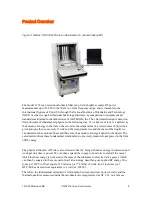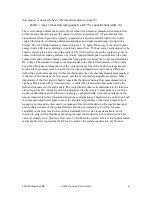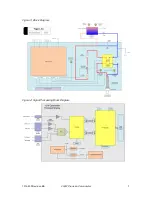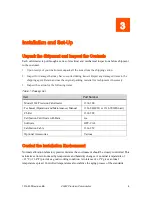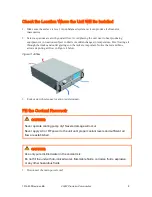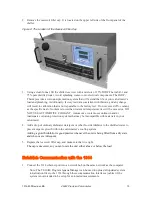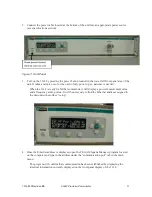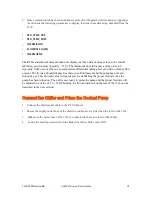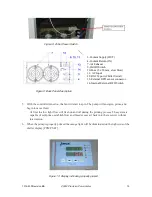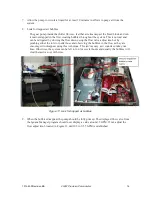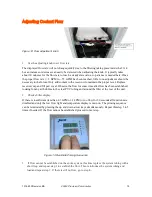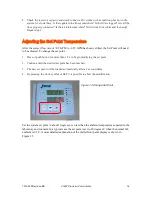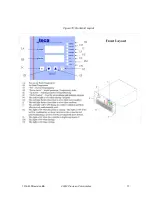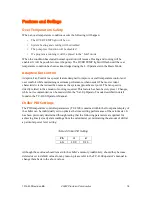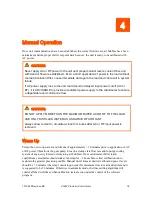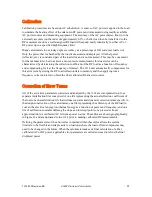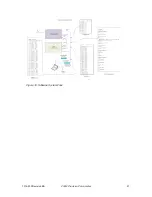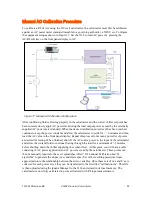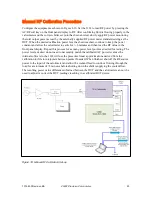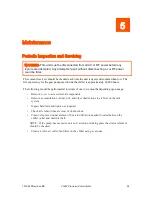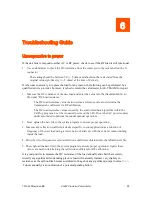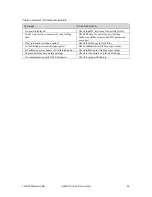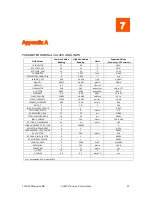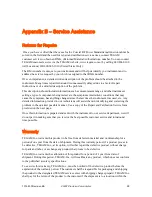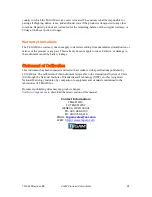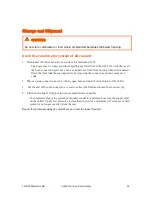
1314-900 Revision BA
250W Precision Calorimeter
19
4
Manual Operation
Once unit communications have been established, the correct flowrate set, air bubbles have been
minimized, and the proper chiller set point have been set, the unit is ready to be calibrated with
AC power.
CAUTION:
Never apply AC or RF power to the unit until proper coolant levels, coolant flow, and
sufficient air flow are established. Even a short application of power to the load without
coolant circulation WILL cause immediate damage to the load and can result in system
failure.
If AC power supply loss to the unit could result in delayed input power cutoff (AC or
RF), it is ADVISABLE to provide a dedicated power supply to the calorimeter to ensure
a dependable and continuous flow.
CAUTION:
DO NOT APPLY MORE THAN THE MAXIMUM RATED AC OR RF TO THE LOAD.
USE ONLY DISTILLED WATER AS A SOURCE OF COOLANT
Always allow coolant to circulate at least 3 minutes after AC or RF input power is
removed.
Warm Up
Permit the unit to operate at a minimum of approximately > 30 minutes prior to application of AC
or RF power (this allows the gear pump to reach a steady state flow rate and to purge cooling
system of any newly formed or remaining air bubbles). Once calorimeter/chiller reach
equilibrium, calorimeter should soak at lab temp for ~ 2 hours before first calibration run to
maintain the greatest precision possible. Manual dwell times at desired calibration power levels
should be > 6 minutes (the temp control loop needs this minimum time to react and settle) and it
is suggested to be 10 minutes. Otherwise in automatic mode, the time settling algorithm will
control all the dwell times when calibration tests are run under the control of the software
program.

